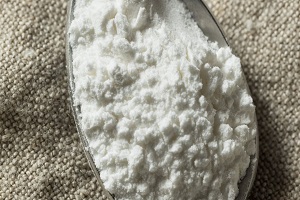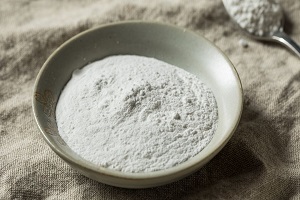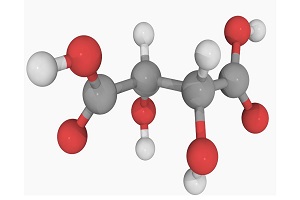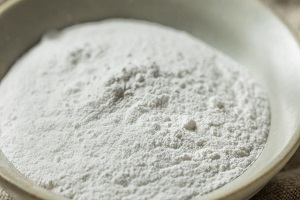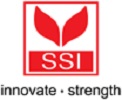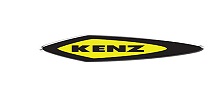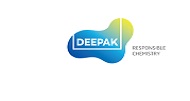Get a Project Report
Startup Business Idea
What is Synthetic Tartaric Acid?
Tartaric acid, also known as 2, 3-Dihydroxysuccinic acid, is a white crystalline organic compound produced from natural resources naturally or synthetically. Naturally, tartaric acid exists in grapes, tamarinds and bananas, among other citric fruits.
However, synthetic tartaric acid can also be produced chemically from maleic anhydrates or hydrogen peroxide. There are three kind of stereoisomers of synthetic tartaric acid: L (+) synthetic tartaric acid, D (-) synthetic tartaric acid and meso synthetic tartaric acid.
Business Plan: Start Production Business of Synthetic Tartaric Acid
Racemic synthetic tartaric acid i.e. DL-tartaric acid is a synthetically produced mixture of 50% L (+) and 50% D (-) tartaric acid. Synthetic tartaric acid is widely used as an antioxidant, acidifier, stabilizer, flavour enhancer and a sequestering agent.
Uses of Synthetic Tartaric Acid:
Synthetic tartaric acid is used in a variety of industries, including in food and beverage, paints and varnishes, textiles, rubber and plastics. In addition to its use as an acidulant or pH adjuster in juices and soft drinks, it is commonly found in wine; however natural tartaric acid derived from grape fermentation is increasingly used due to concerns about potential side effects from synthetic acids.
Visit this Page for More Information: Start a Business in Chemical Industry Projects
It also has many uses in cleaning products such as hand soap, dishwashing detergent and laundry detergent. It can be found in skin care products such as facial cleansers, moisturizers and sunscreens. It is also used for medical purposes such as oral hygiene products like toothpaste and mouthwash.
It can be added to cosmetics like mascara, eye shadow and foundation to increase shine. There are even some personal lubricants that contain synthetic tartaric acid for its ability to create a cooling sensation during sexual activity. The list goes on and on. This versatile chemical can be found in almost every industry, so if you’re looking to start your own business, it’s worth looking into!
Watch Video: Start Production of Synthetic Tartaric Acid. Best Business Ideas in Manufacturing Industries
Manufacturing Process of Synthetic Tartaric Acid:
This is an example of a non-standard synthesis.
First, maleic anhydride (MA) and sulfuric acid are co-fed into a highly exothermic reaction to produce 3, 4-dimethylene dioxy benzoic acid as shown in figure
Download PDF: Start Production of Synthetic Tartaric Acid. Best Business Ideas in Manufacturing Industries
- Hydrogen peroxide is then added to protonate dibenzoate ring at 3 to 4 position thus giving alpha-3, 4 dimethylene succinic acid as shown in figure 3. The product can be isolated by distillation or by extraction with suitable solvent like ether or hexane.
The product can be further purified by crystallization using solvents like diethyl ether or hexane. The final pure material is isolated from solvent and dried under vacuum conditions to get pure synthetic tartaric acid derivative.
Related Feasibility Study Reports: Chemicals (Organic, Inorganic, Industrial) Projects
Why should you invest in this Business Idea?
A growing concern in society is health. As people are becoming more health conscious, a number of food companies have begun to take advantage of natural sweeteners. Tartaric acid is a common component in many food products like juices and soft drinks.
It gives certain foods that tart flavor consumers love. A large demand for tartaric acid arises from these food companies as it is an essential component for their production process. This business idea focuses on creating synthetic tartaric acid which can be used in place of naturally occurring tartaric acid.
Read our Books Here: Chemical Technology (Organic, Inorganic, and Industrial), Fine Chemicals
This will lower costs for food companies and allow them to pass along those savings to consumers. The growth potential for synthetic tartaric acid is limitless with a forecasted increase in sales every year. With all of these factors combined, investing in synthetic tartaric acid manufacturing would prove to be lucrative and successful investment.
Market Outlook:
The global synthetic tartaric acid market is expected to reach US$ 531.4 million by the end of 2018, and US$ 804.7 million by the end of 2027. During the projected period, the synthetic tartaric acid market is expected to grow at a CAGR of 4.8 percent.
Over the period 2019-2027, the global Synthetic tartaric acid market is estimated to generate additional revenue of US$ 273.3 million.
Read Similar Articles: Chemical Industry
The food and beverage business is booming globally, and this trend is likely to continue during the forecast period. This is due, among other things, to rising population, changing dietary patterns, rising per capita spending, technological developments in food and beverage manufacturing, and expanding food product shelf life.
Furthermore, increasing demand for synthetic tartaric acid as an excipient in medicine formulations for the creation of effervescent tablets, powder, and granulates will be a major factor driving the synthetic tartaric acid market forward.
Watch other Informative Videos: Chemicals (Organic, Inorganic, and Industrial)
Furthermore, governments and regulatory agencies in developed countries are working to shorten the licencing procedure for excipients, which will help the synthetic tartaric acid market grow even faster. Over the projection period, the increased use of chemical admixtures will also fuel demand for synthetic tartaric acid as a retardant.
Key Players:
- Caviro Group
- Omkar Specialty Chemicals
- ATP Group Changmao Biochemical Engineering
- Distillerie Mazzari
- DistillerieBonollo
- Pahi
- Derivados Vinicos
- Merck
- Tarac Technologies
- Alvinesa Alcoholera Vinicola S.A.
- Tártaros Gonzalo Castelló
- Vinicas

